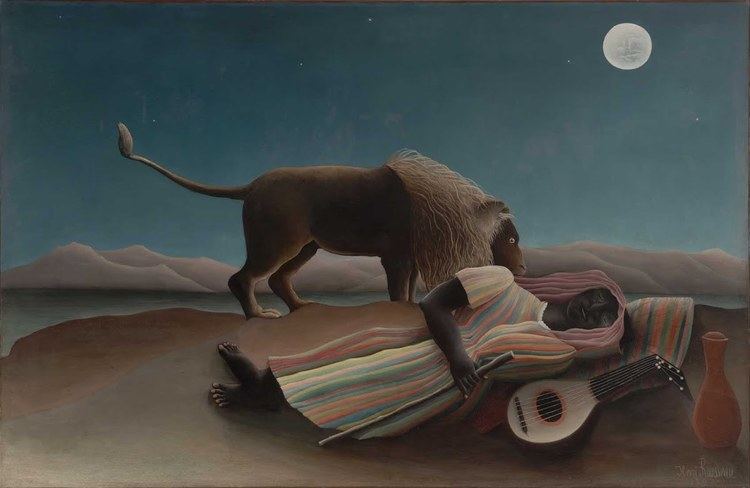Year 1897 (1897) Created 1897–1897 | Medium oil on canvas Dimensions 1.3 m x 2.01 m Genre History painting | |
 | ||
Similar Henri Rousseau artwork, Artwork at Museum of Modern Art | ||
The sleeping gypsy henri rousseau
The Sleeping Gypsy (French: La Bohémienne endormie) is an 1897 oil painting by French Naïve artist Henri Rousseau (1844–1910). It is a fantastical depiction of a lion musing over a sleeping woman on a moonlit night.
Contents
- The sleeping gypsy henri rousseau
- The sleeping gypsy rousseau animated painting loop 02
- Description
- References
Rousseau first exhibited the painting at the 13th Salon des Indépendants, and tried unsuccessfully to sell it to the mayor of his hometown, Laval. Instead, it entered the private collection of a Parisian charcoal merchant where it remained until 1924, when it was discovered by the art critic Louis Vauxcelles. The Paris-based art dealer Daniel-Henry Kahnweiler purchased the painting in 1924, although a controversy arose over whether the painting was a forgery. It was acquired by art historian Alfred H. Barr Jr. for the New York Museum of Modern Art.
The sleeping gypsy rousseau animated painting loop 02
Description
Rousseau described his painting as follows: "A wandering Negress, a mandolin player, lies with her jar beside her (a vase with drinking water), overcome by fatigue in a deep sleep. A lion chances to pass by, picks up her scent yet does not devour her. There is a moonlight effect, very poetic."
